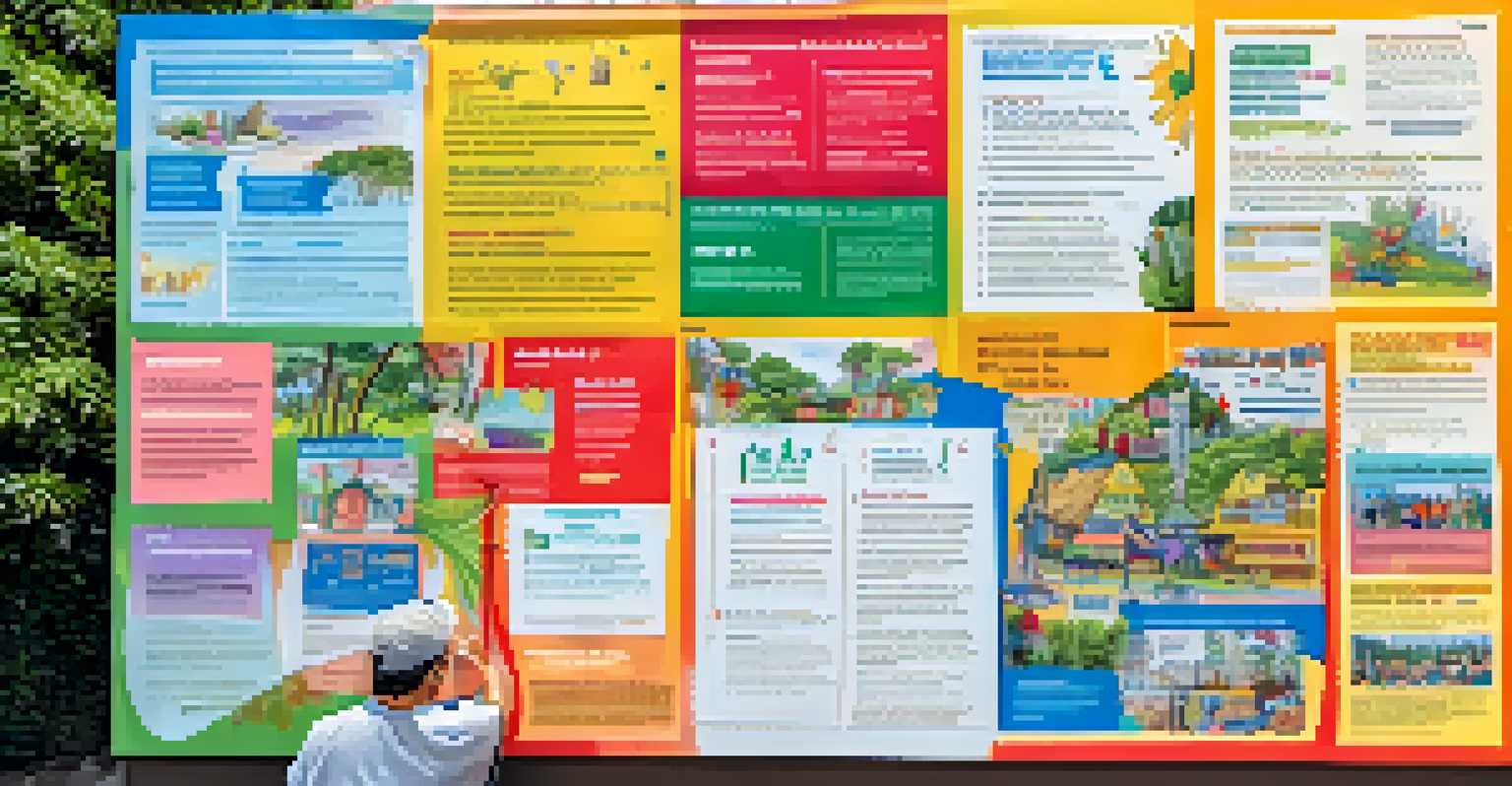NYC's Response to COVID-19: Crisis Communication Analysis

Understanding NYC's Unique Challenges During COVID-19
New York City, known for its bustling streets and vibrant culture, faced unprecedented challenges as COVID-19 swept through in early 2020. With a dense population and a robust, interconnected economy, the city was particularly vulnerable to the virus's rapid spread. The urgency of the situation required immediate and effective communication to keep residents informed and safe.
In the midst of chaos, there is also opportunity.
As cases began to rise, the city's healthcare systems were quickly overwhelmed, leading to a dire need for transparent and accessible information. The government had to address not just the public health crisis but also the fear and uncertainty gripping the city. This context set the stage for a multifaceted approach to crisis communication.
Understanding the unique challenges NYC faced helped shape the response strategy. By recognizing the need for clear messaging and timely updates, the city aimed to build trust and ensure public compliance with health directives. This awareness was crucial for effective communication throughout the pandemic.
Key Messages Conveyed by NYC Officials
Early on, NYC officials emphasized the importance of following health guidelines, such as mask-wearing and social distancing. These messages were vital in encouraging residents to adopt preventive measures to slow the virus's spread. The city's leadership utilized various platforms to disseminate these crucial messages, ensuring they reached a broad audience.

The clarity of the messaging was paramount; officials aimed to simplify complex health information into digestible bites. For example, daily press briefings often included straightforward statistics and actionable advice. This approach helped demystify the ongoing situation and kept the public informed without overwhelming them with jargon.
Crisis Communication in NYC
NYC's response to COVID-19 focused on clear, effective communication to build trust and keep residents informed.
In addition to health directives, NYC's communication strategy included messages of solidarity and resilience. By fostering a sense of community, officials encouraged citizens to support one another during this challenging time, promoting mental health and well-being amidst the crisis.
Utilization of Digital Platforms for Communication
As the pandemic unfolded, NYC harnessed the power of digital platforms to reach residents effectively. Social media played a crucial role, with city officials using channels like Twitter, Facebook, and Instagram to share real-time updates. This approach allowed for rapid dissemination of information, helping to keep the public informed in a fast-paced environment.
The greatest weapon against stress is our ability to choose one thought over another.
Additionally, the city created dedicated websites and mobile apps to provide comprehensive resources about COVID-19. These platforms offered up-to-date information on testing sites, vaccination locations, and health guidelines. By centralizing this information, NYC made it easier for residents to access the help and resources they needed.
The strategic use of digital tools not only enhanced communication but also fostered community engagement. Virtual town halls and interactive Q&A sessions allowed residents to voice their concerns and receive direct responses from officials, creating a two-way communication channel that was essential during the crisis.
Collaboration with Public Health Experts
The collaboration between NYC officials and public health experts was instrumental in shaping the city's crisis communication strategy. By consulting with epidemiologists and health professionals, the city ensured that messages were scientifically accurate and reflected the latest findings about the virus. This expertise lent credibility to the information being shared.
Public health experts helped in crafting messages that were not only informative but also culturally sensitive, recognizing the diverse demographics of the city. Tailored communication strategies were developed for different communities, ensuring that everyone received relevant and understandable information. This approach was essential in addressing the varied needs of NYC's residents.
Digital Platforms Enhanced Reach
The city utilized social media and dedicated websites to provide real-time updates and resources to the public.
Moreover, the visibility of health experts during press conferences reassured the public. Their presence helped establish trust in the information being communicated and underscored the city's commitment to prioritizing public health amidst the crisis.
Addressing Misinformation and Building Trust
One of the significant challenges during the pandemic was the rampant spread of misinformation. NYC officials recognized the need to combat false narratives that could undermine public health efforts. This led to proactive measures to clarify misconceptions and provide factual information through various channels.
Efforts to address misinformation included fact-checking initiatives and partnerships with community organizations. By engaging trusted voices within neighborhoods, the city could amplify accurate information and counter false claims effectively. This grassroots approach was essential in reaching those who may have been skeptical of official messaging.
Building trust was a critical component of the communication strategy. NYC officials worked to maintain transparency, regularly updating the public on the changing circumstances and decision-making processes. This openness helped foster confidence in the city's leadership during such uncertain times.
The Role of Community Engagement in Communication
Community engagement played a pivotal role in NYC's response to COVID-19. Leaders recognized that effective communication goes beyond just relaying information; it involves listening to the concerns and needs of the community. By involving residents in the conversation, the city could create more targeted and relevant communication strategies.
Through surveys, feedback sessions, and community forums, officials gathered valuable insights into how COVID-19 was impacting different neighborhoods. This information allowed for tailored messaging that resonated with residents and addressed their specific challenges. Community voices were vital in shaping the overall communication approach.
Community Engagement Was Key
Engaging with residents through feedback and support initiatives helped tailor messaging and foster a sense of unity during the pandemic.
Moreover, initiatives that encouraged residents to share their stories fostered a sense of unity. Highlighting personal experiences and resilience helped humanize the crisis, reminding everyone that they were in this together. This sense of solidarity was essential in maintaining morale during such trying times.
Evaluating the Success of NYC's Communication Strategies
As the pandemic progressed, evaluating the effectiveness of NYC's crisis communication strategies became crucial. Metrics such as public compliance with health guidelines and vaccination rates were key indicators of success. Surveys and studies helped assess how well residents understood and acted upon the communicated messages.
Feedback mechanisms allowed the city to adjust its strategies in real time. By analyzing which messages resonated most with the public, officials could refine their approach to enhance clarity and impact. Continuous evaluation ensured that communication remained relevant and effective throughout the evolving situation.

Ultimately, the ability to adapt and learn from feedback was a significant factor in NYC's communication success. By remaining responsive to the needs of the community, the city could build a more resilient public health communication framework that could be utilized in future crises.